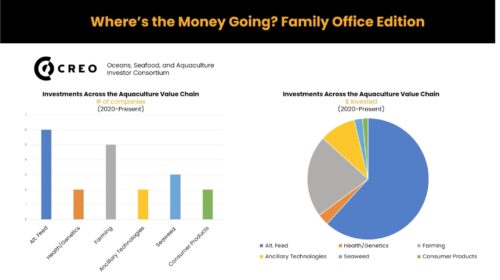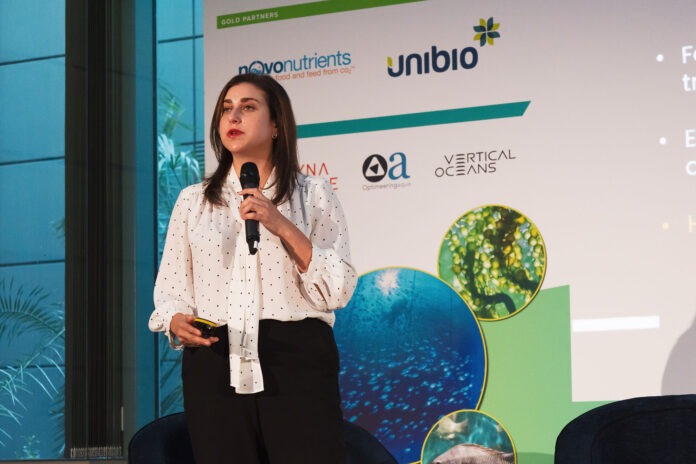Alternative feed, especially insects and single-cell protein, was the top recipient of investment capital from ultra-high-net-worth clients of a New York-based organization focused on climate-change solutions.
The category corralled more than 60 percent of the $200 million invested by the Oceans, Seafood and Aquaculture Investor Consortium since its founding in 2020.
Maggie Fried, who heads the consortium within the non-profit CREO (short for Cleantech, Renewable Energy and Environmental Opportunities), says “Protein is a clear winner,” given that feed raw materials singlehandedly contribute 50 percent of emissions in aquaculture.
Farming came in second in terms of the dollars invested by the consortium’s membership comprising of 35 family offices and funds focused on impact-investing in blue foods sectors.
Investments in ancillary technologies came in third, followed by health and genetics, Fried told the audience at last week’s Blue Foods Innovation Summit organized by Rethink Events.

Capital just ‘waiting in the wings’
In the two years since Fried joined CREO, she noted in another webinar that her clients have become less enthusiastic about salmon land-based farming because of “concerns around many of the risks” that have been magnified over the past year.
The year in question, 2021, was rife with news about the troubles that dogged the Miami-based operations of RAS pioneer Atlantic Sapphire.
She now says the blue foods sector is “on the brink” of seeing “a waterfall of capital coming in,” however, there’s a caveat, she said:
“I regularly hear that there are other investors who are waiting in the wings to come into the space… They’re waiting for the success of those companies that the funds are investing in.”
“We have members who continue to look at land-based salmon deals as well as those who invest in technology that is targeting net-pen salmon producers as clients,” Fried told SalmonBusiness in an email.
“While I can’t speak to what the investors who are waiting in the wings will invest in, if salmon RAS production can continue to ramp up without significant problems, it is hard to imagine that capital won’t flow into the space,” she said.
Asked whether traditional salmon farming is on the radar of these investors given that it has reached its capacity for growth, and whether it aligns with their with their impact-investing goals, Fried said they are investing across the salmon value chain, including feed, health, farming, processing and consumer products.
While there’s been a rapid increase of investors coming into aquaculture (the arrival of the world’s first sustainable aquaculture fund, Aquaspark, really helped) there’s still much to do because aquaculture needs $12-$25 billion to meet demand “to truly build the sector,” she said, citing figures from Nature Conservancy.
“I’m seeing a lot of investors as well investment opportunities outside of salmon,” she said, adding that “driving consumption of seafood – the most climate-smart protein – cannot be solved with salmon alone.”


